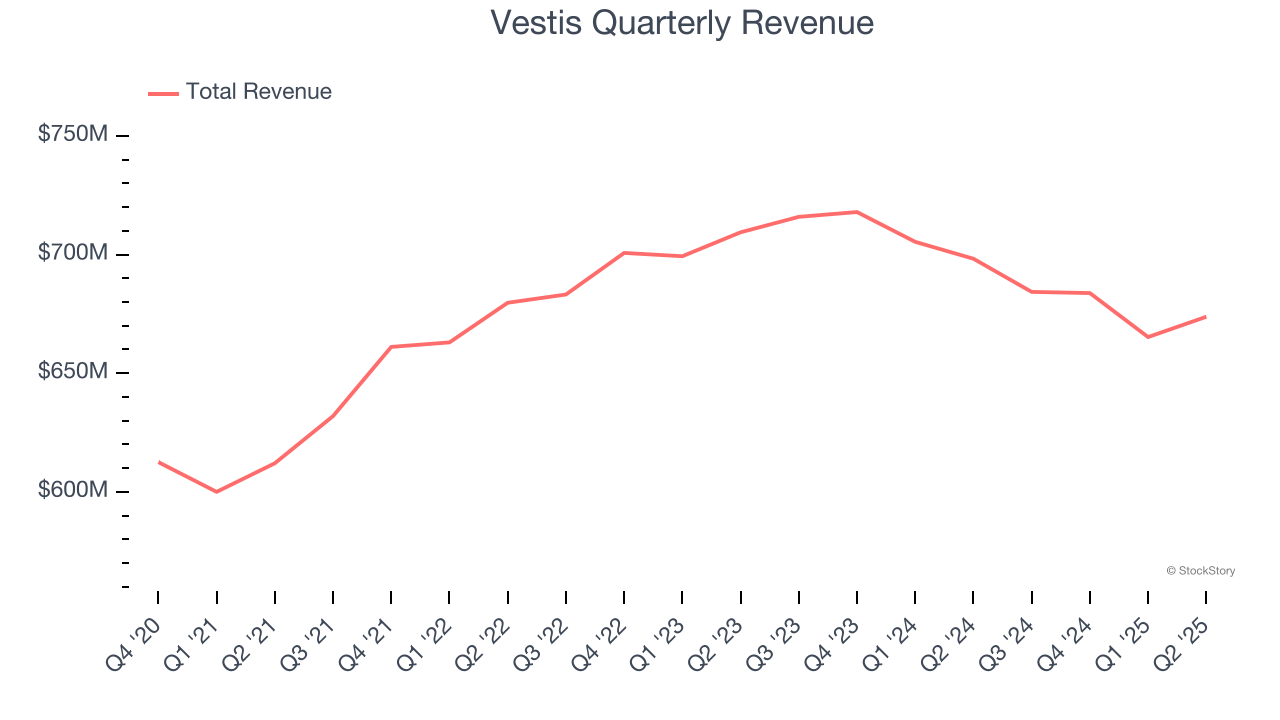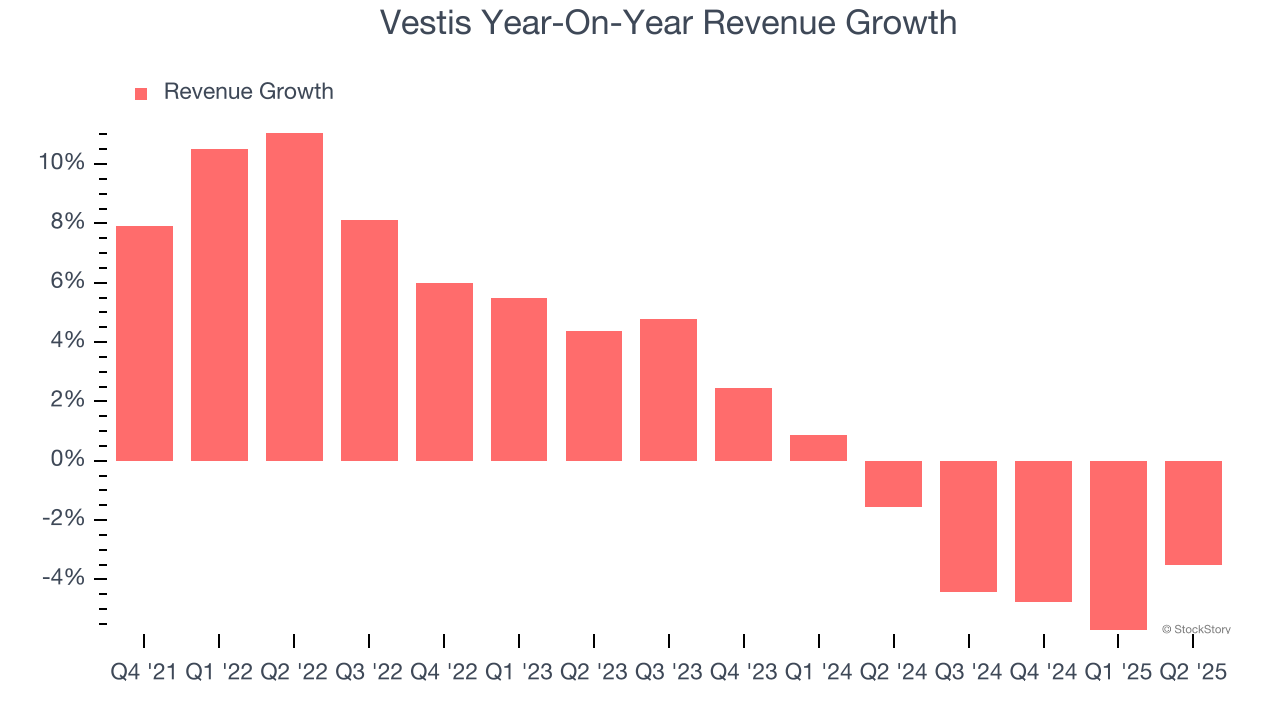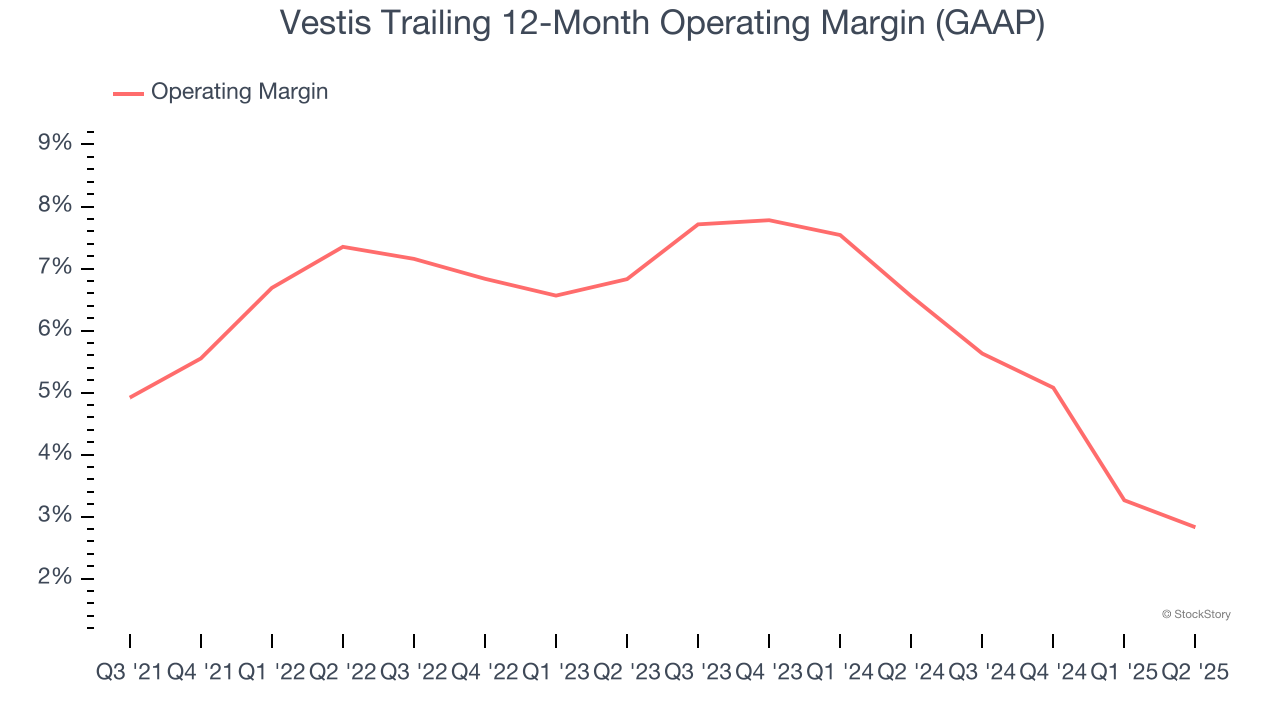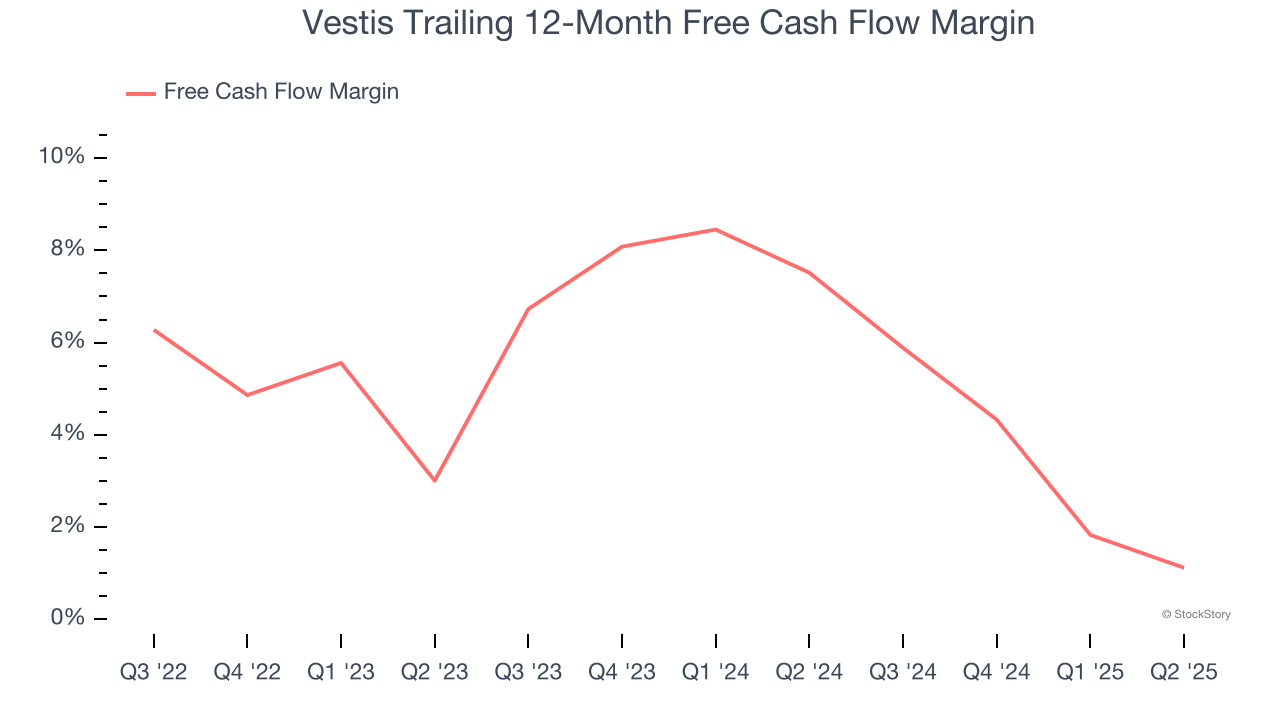
Uniform rental provider Vestis Corporation (NYSE: VSTS) met Wall Street’s revenue expectations in Q2 CY2025, but sales fell by 3.5% year on year to $673.8 million. Its GAAP loss of $0.01 per share was in line with analysts’ consensus estimates.
Is now the time to buy Vestis? Find out by accessing our full research report, it’s free.
Vestis (VSTS) Q2 CY2025 Highlights:
- Revenue: $673.8 million vs analyst estimates of $675 million (3.5% year-on-year decline, in line)
- EPS (GAAP): -$0.01 vs analyst estimates of -$0.02 (in line)
- Adjusted EBITDA: $64.01 million vs analyst estimates of $63.34 million (9.5% margin, 1.1% beat)
- Operating Margin: 3.7%, down from 5.4% in the same quarter last year
- Free Cash Flow Margin: 1.2%, down from 4% in the same quarter last year
- Market Capitalization: $785.4 million
“I’m pleased that our third quarter results were in line with our expectations and that we generated positive cash flow during the period,” said Jim Barber, President and CEO.
Company Overview
Operating a network of more than 350 facilities with 3,300 delivery routes serving customers weekly, Vestis (NYSE: VSTS) provides uniform rentals, workplace supplies, and facility services to over 300,000 business locations across the United States and Canada.
Revenue Growth
A company’s long-term sales performance can indicate its overall quality. Any business can put up a good quarter or two, but the best consistently grow over the long haul.
With $2.71 billion in revenue over the past 12 months, Vestis is a mid-sized business services company, which sometimes brings disadvantages compared to larger competitors benefiting from better economies of scale.
As you can see below, Vestis grew its sales at a sluggish 2.6% compounded annual growth rate over the last four years. This shows it failed to generate demand in any major way and is a rough starting point for our analysis.

Long-term growth is the most important, but within business services, a stretched historical view may miss new innovations or demand cycles. Vestis’s performance shows it grew in the past but relinquished its gains over the last two years, as its revenue fell by 1.5% annually. 
This quarter, Vestis reported a rather uninspiring 3.5% year-on-year revenue decline to $673.8 million of revenue, in line with Wall Street’s estimates.
Looking ahead, sell-side analysts expect revenue to grow 1.3% over the next 12 months. While this projection implies its newer products and services will fuel better top-line performance, it is still below the sector average.
Today’s young investors won’t have read the timeless lessons in Gorilla Game: Picking Winners In High Technology because it was written more than 20 years ago when Microsoft and Apple were first establishing their supremacy. But if we apply the same principles, then enterprise software stocks leveraging their own generative AI capabilities may well be the Gorillas of the future. So, in that spirit, we are excited to present our Special Free Report on a profitable, fast-growing enterprise software stock that is already riding the automation wave and looking to catch the generative AI next.
Operating Margin
Operating margin is an important measure of profitability as it shows the portion of revenue left after accounting for all core expenses – everything from the cost of goods sold to advertising and wages. It’s also useful for comparing profitability across companies with different levels of debt and tax rates because it excludes interest and taxes.
Vestis was profitable over the last five years but held back by its large cost base. Its average operating margin of 5.7% was weak for a business services business.
Looking at the trend in its profitability, Vestis’s operating margin decreased by 2.6 percentage points over the last five years. This raises questions about the company’s expense base because its revenue growth should have given it leverage on its fixed costs, resulting in better economies of scale and profitability. Vestis’s performance was poor no matter how you look at it - it shows that costs were rising and it couldn’t pass them onto its customers.

This quarter, Vestis generated an operating margin profit margin of 3.7%, down 1.7 percentage points year on year. This reduction is quite minuscule and indicates the company’s overall cost structure has been relatively stable.
Cash Is King
Although earnings are undoubtedly valuable for assessing company performance, we believe cash is king because you can’t use accounting profits to pay the bills.
Vestis has shown mediocre cash profitability over the last four years, giving the company limited opportunities to return capital to shareholders. Its free cash flow margin averaged 5%, subpar for a business services business.
Taking a step back, we can see that Vestis’s margin dropped by 9.8 percentage points during that time. This along with its unexciting margin put the company in a tough spot, and shareholders are likely hoping it can reverse course. If the trend continues, it could signal it’s becoming a more capital-intensive business.

Vestis’s free cash flow clocked in at $8.00 million in Q2, equivalent to a 1.2% margin. The company’s cash profitability regressed as it was 2.8 percentage points lower than in the same quarter last year, suggesting its historical struggles have dragged on.
Key Takeaways from Vestis’s Q2 Results
Revenue and EPS were just in line. Investors were likely hoping for more, and shares traded down 4.7% to $5.70 immediately following the results.
Is Vestis an attractive investment opportunity right now? When making that decision, it’s important to consider its valuation, business qualities, as well as what has happened in the latest quarter. We cover that in our actionable full research report which you can read here, it’s free.



